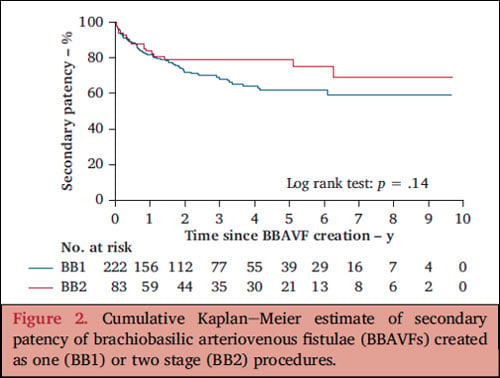Outcomes of single or two-stage brachiobasilic arteriovenous fistula: a Nationwide Swedish Registry study
Selected in ESVS Journal by Mathis Bodin
This nationwide Swedish registry study compared one- and two-stage brachiobasilic arteriovenous fistula procedures in adult patients. While the two-stage approach showed superior primary patency, it came at the cost of a longer delay before functional use. In the long term, both techniques performed similarly—highlighting the importance of tailoring the surgical strategy to each patient’s context.
References:
Authors: Gunilla Welandera, Fredrik Lundin,∙Hawshin Palanjafic, Birgitta Sigvant
Reference: Welander et All. European Journal of Vascular and Endovascular Surgery 2025
DOI: 10.1016/j.evjs.2024.12.027
Read the abstractObjective:
The objective was to determine whether functional outcomes favoured the one- or two-stage procedure for the creation of a basilic vein arteriovenous transposition fistula.
Study:
Retrospective and observational study based on the Swedish National Renal Registry.
Population:
Patients aged of 18 years or more and who underwent the creation of a brachiobasilic arterioveinous fistula were included.
Outcomes and conclusion:
This observational and retrospective study highlights the superior primary patency of the two-stage procedure counterbalanced by a longer time before functional use of the fistula. The long-term patency was equivalent for the two surgical techniques. Thus, the surgical procedure chosen needs to be adapted to the patient and the context.


Get the latest clinical cases and breaking news delivered straight to your inbox!


Comments:
Key findings from the study
When comparing the two surgical approaches:
Impact of female sex
Study limitations
Importance of post-creation management